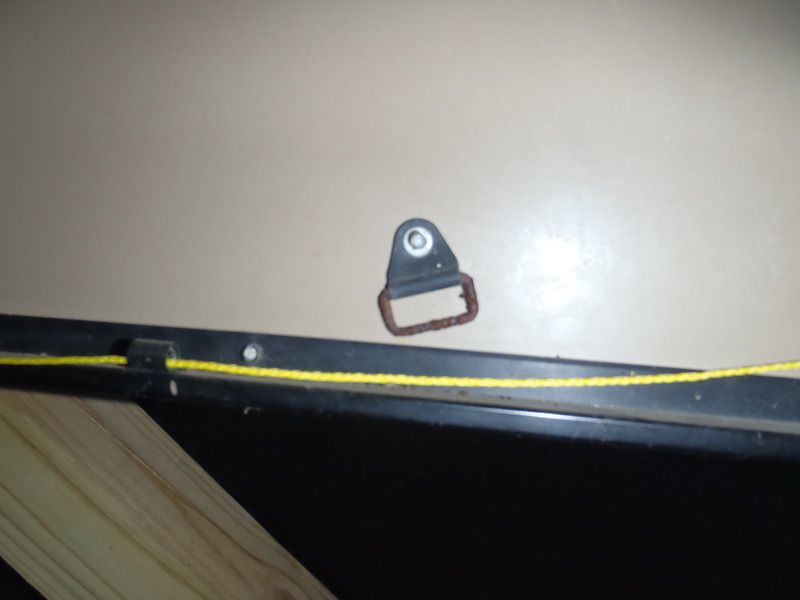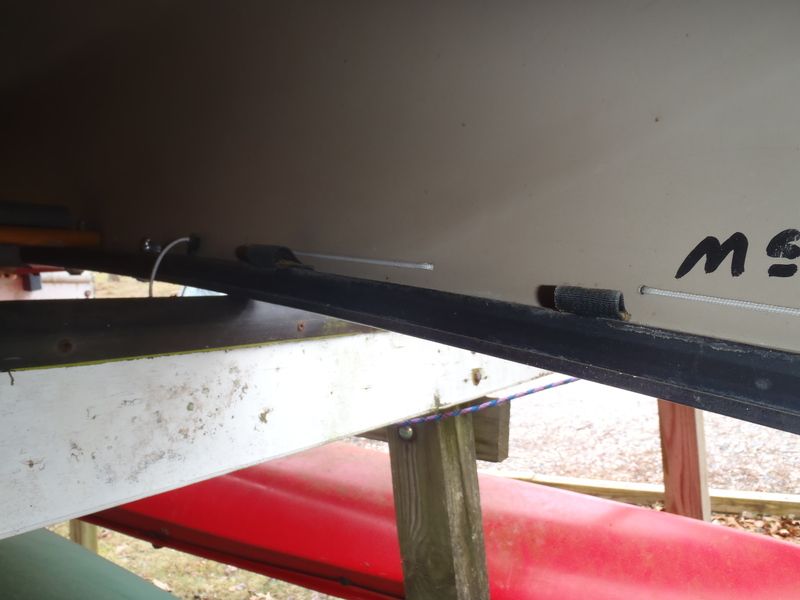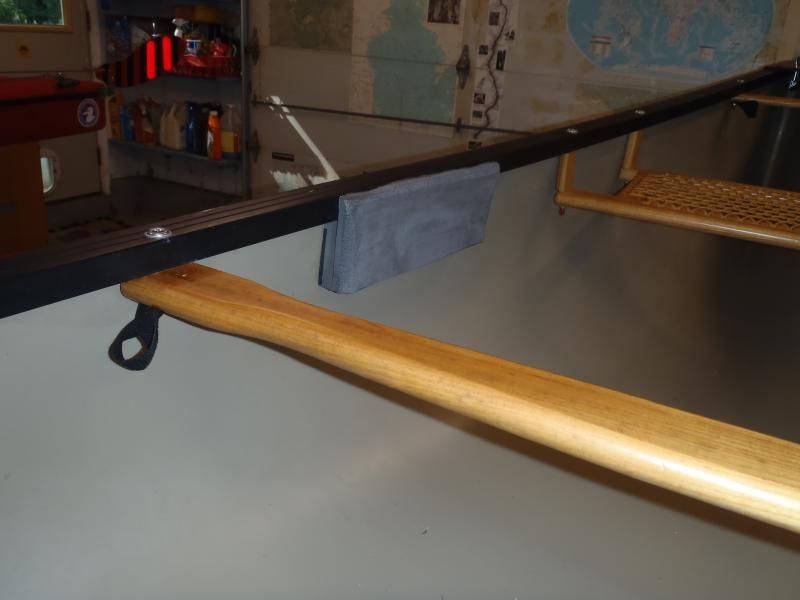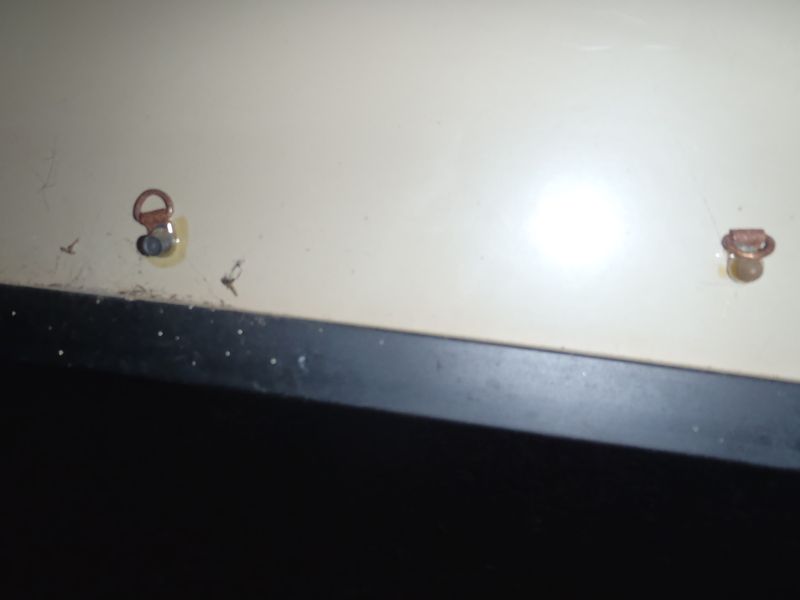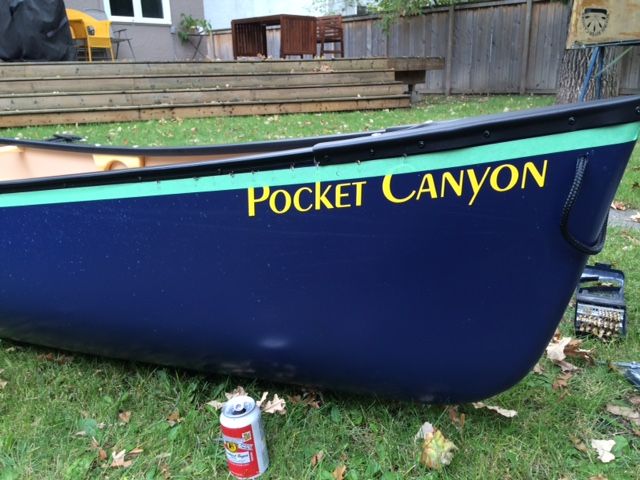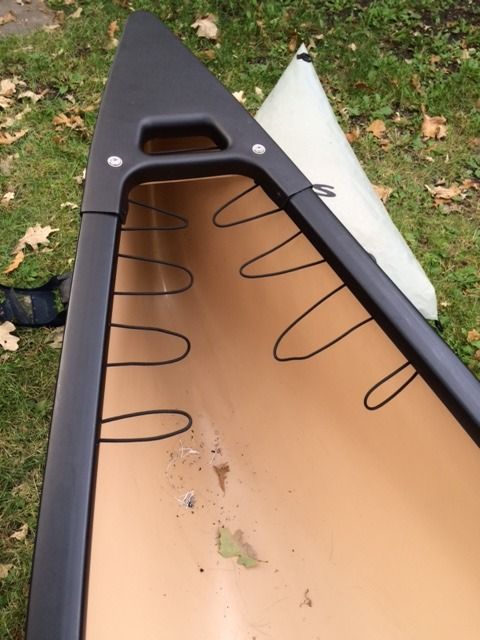webbing loops if those attachment points may also see cross-boat straps to secure a gear load. I like straps for gear
To be clear, I use straps through vinyl pad D-rings, Vynabonded or G/flexed to the bottom of the canoe, with a strap over the float bags and to keep gear held low and attached to the floor. Those are (mostly) the same D-ring pads that strap in float bags with less of a load.
Some multi-use canoes have ended up with lacing and vinyl pad D-rings to accommodate either small or large ends bags. The extra sets of D-ring pads (or two) are useful for securing sundry gear loads.
If you are thinking of taking float bags in and out depending on the trip and load, some system that laces, clips and straps into (and out of) place quickly and easily is beneficial. I do not like spending time bent over or on my knees futzing with boat outfitting at the launch. Let me git and go, away from syphilization quickly as possible if you please.
Still, I would
prefer to take the float bags out when cartopping the canoe any distance, and not worry about cartopping deflated flapping wear, or over-expended in the sun bag bursts or ripped out D-rings. Bad, bad things can happen when a bag over expands in heat and sun.
Yeah. . . I have a high-volume low-pressure 12V float bag compressor in the truck and could easily inflate the bags at launch. One more dang thing to do.
In actually practice the only float bags I take out for travel are those most easily caged and uncaged. With other boats I do check and deflate/inflate the bags at every stop as temps and elevations change, but I know they really shouldn’t be up there for hundreds of freeway miles. Don’t be lazy like me.
If you choose to be exceedingly lazy like me and leave some float bags in place, even for local trips, at least have a close look underneath at the stems, deck plates, carry handles and thwarts and eliminate any obvious puncture points. The best way to accomplish that inspection is set the canoe upside down and stick your head (and a flashlight) inside and have a looksee.
The naked end of a machine screw shank may be the worst abrasion/puncture culprit. Thread protectors are cheap insurance.
http://www.homedepot.com/p/Everbilt-10-Black-Rubber-Screw-Protectors-2-Piece-812788/204275995
Thread protectors are worth putting on every exposed machine screw end, even if there isn’t a float bag in the vicinity. Think puncturing or abrading dry bags and packs. Or gouging your hand or leg in a flop-into-the-hull self-rescue. Or, worse, an assisted rescue wth someone grabbing that raw shank end under the gunwale.
Hell, think finger ring accidents. Some astronaut lost a finger that way jumping over a fence. Graphic photos warning:
http://ranchers.net/forum/viewtopic.php?t=38180
Machine screws in canoes should be properly sized, so there isn’t even an extra ¼ inch of shank protruding.
Washer, nylock, near flush; too many manufacturers skimp on that proper sizing.
Skwid, I’m wearing my fuzzy Crocs as I type, and had them on this morning when I went to the store for a newspaper.

